Hello, I’m Michael Zhang. As a passionate traveler with years of international exploration behind me, I’ve always believed that every ancient site holds a hidden story of civilization waiting to be uncovered. Guangxiao Temple is not just a Buddhist temple—it’s a living record of Lingnan history, bearing witness to over 2,000 years of cultural evolution. If you ever find yourself in Guangzhou, I highly recommend visiting Guangxiao Temple with an open heart and curious mind.
In this article, I’ll guide you through the temple’s rich history, highlights, visitor information, and some thoughtful travel tips to help you connect deeply with the cultural essence of this vibrant Chinese city.
Summary
Introduction to Guangxiao Temple
Guangxiao Temple is one of the most renowned ancient temple complexes in Guangdong Province. According to the Chronicles of Guangxiao Temple, it originally served as the residence of Zhao Jiande, the king of Nanyue, in the 2nd century BCE. During the Three Kingdoms period, the exiled Eastern Wu scholar Yu Fan lived here and transformed it into a private garden, which later became known as “Yu Garden.”
The temple is known for its precise architectural layout and grand, dignified halls. Most notably, it is home to an impressive array of historic relics, such as the Main Hall (Mahavira Hall) built during the Eastern Jin dynasty, the Bowl-Washing Spring carved by Bodhidharma in the Southern Dynasties, the Hair-Burial Pagoda and Stone Sutra Pillar from the Tang dynasty, the Iron Pagoda of a Thousand Buddhas from the Southern Han, and the Six Patriarch Hall and Reclining Buddha Hall from the Song and Ming dynasties. You’ll also find ancient inscriptions, statues, terminalia trees, and bodhi trees, all of which are invaluable relics of Buddhist history.
- Address: 109 Guangxiao Road, Yuexiu District, Guangzhou (Apple Maps/Amap)
- Opening hours: Monday to Sunday, 8:30 AM – 4:30 PM
- Recommended visiting time: 1 to 2 hours
- Best time to visit: All seasons
- Ticket price: 5 CNY
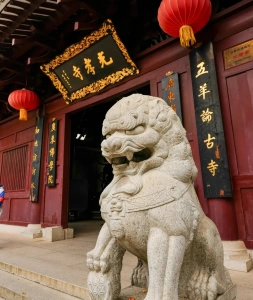
Guangxiao Temple Map
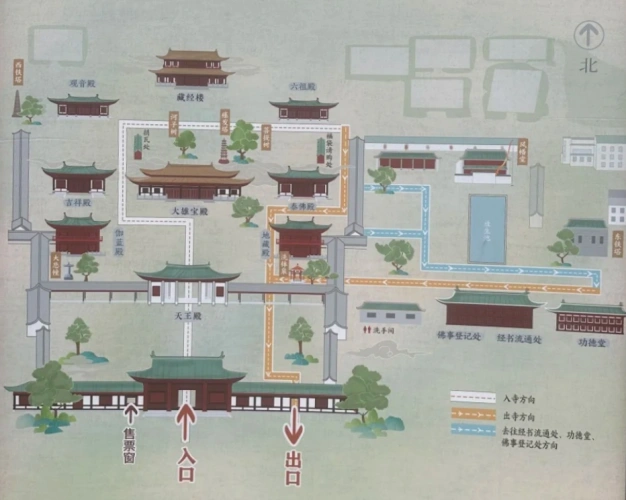
Why You Should Visit Guangxiao Temple
Guangxiao Temple not only boasts a rich historical background but also features uniquely traditional Chinese architecture and majestic halls. It houses priceless Buddhist relics such as the Mahavira Hall, Bowl-Washing Spring, Hair-Burial Pagoda, and the Iron Pagoda of a Thousand Buddhas. Particularly famous is the bodhi tree, said to have been planted by the Sixth Patriarch Huineng himself. Even after a thousand years, it still stands tall and lush, drawing countless believers who come to pay homage.
More than 500,000 devotees visit annually to burn incense and seek spiritual comfort. Even on non-holiday weekdays, a steady stream of visitors comes to pray. This is not only a sacred space for making wishes but also a tranquil place for contemplation. Many people visit to find peace amid the fast-paced rhythm of modern life.
Top Things to Do in Guangxiao Temple
Main Attractions
Hall of Heavenly Kings
The Hall of Heavenly Kings is the first hall visitors encounter when entering Guangxiao Temple. It’s a commanding structure that serves as the temple’s welcoming gateway. Inside, the central figure is the smiling Maitreya Buddha, whose open arms and round belly represent joy and acceptance. Flanking him are the Four Heavenly Kings, each holding symbolic objects and displaying stern expressions—guardians of balance, order, and protection.
Behind them stands Skanda Bodhisattva (Weituo), a protector of the temple wielding a vajra staff. Many visitors come here to pray for family harmony, good health, and joy. It is considered the go-to spot for blessings related to domestic well-being.
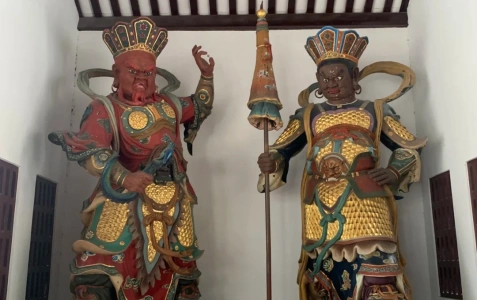
Mahavira Hall (Main Hall)
The Mahavira Hall is the spiritual core of Guangxiao Temple and one of its most sacred spaces. At its center stands Shakyamuni Buddha, flanked by Manjusri and Samantabhadra, along with the ever-compassionate Guanyin Bodhisattva. Together, they represent wisdom, action, and mercy.
According to Chinese Buddhist tradition, Manjusri embodies wisdom, Samantabhadra represents virtuous practice, and Guanyin symbolizes boundless compassion. Worshippers often visit this hall to pray for success in official careers, financial prosperity, academic achievement, and professional growth. As incense fills the air, each bow and prayer becomes a step toward fulfilling heartfelt wishes.
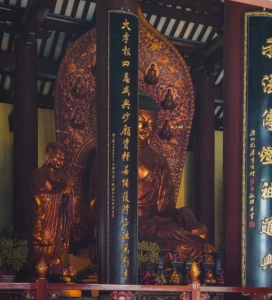
Hair-Burial Pagoda
The Hair-Burial Pagoda carries deep spiritual symbolism and adds a layer of mystique to Guangxiao Temple. Legend says it is linked to the Buddhist rite of shaving one’s head as a symbol of renouncing worldly life. The pagoda is believed to honor disciples who buried their hair here as a vow to leave behind secular ties and fully devote themselves to the Buddhist path.
Visitors often perform a simple but solemn ritual: bow before the pagoda, then walk clockwise around it three times (or five, or seven—always an odd number), and end with a final bow. This practice is considered a symbolic form of spiritual purification and a meaningful way to align oneself with Buddhist teachings.
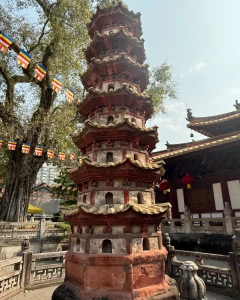
Guangxiao Temple Ticket Guide
Ticket Prices at Guangxiao Temple
- Adult admission: 5 CNY.
- Free admission: Children under 1.3 meters in height, or seniors over 60 years old.
Where to Buy Tickets
- Online: Via the official WeChat account or designated booking platforms.
- Offline: At the on-site ticket office or by scanning a QR code at the entrance.
Recommended Walking Route Inside Guangxiao Temple
Guangxiao Temple isn’t very large, but the high number of visitors can easily make it confusing to navigate. Here is a recommended route that ensures you won’t miss anything and allows you to move through the temple efficiently without backtracking:
Buy flowers – Enter the temple – Hall of Heavenly Kings – Drum Tower – Mahavira Hall – Ksitigarbha Hall – Auspicious Hall – Guanyin Hall – Sixth Patriarch Hall – Qin Buddha Hall – Blessing tokens and amulets – Lotus Pond – Meritorious Hall – Bell Tower – Exit.
Blessing Guide at Guangxiao Temple
Guangxiao Temple is famous for the spiritual power of its blessings, making it a must-visit temple in Guangzhou during holidays. Here’s a detailed blessing guide to help you turn your wishes into reality.
- Flower offerings: Each of the four main halls has specific flower types believed to enhance the power of your prayers. Vendors selling fresh flowers line the street from the metro exit—simply choose the one with the freshest bouquets. For smaller halls, sunflowers are sufficient.
- Mahavira Hall: Recommended—lilies, symbolizing peace and financial blessings
- Ksitigarbha Hall: Recommended—“jie jie gao” (lucky bamboo-like flowers), symbolizing rising career success
- Guanyin Hall: Recommended—roses, symbolizing relationships and helpful people
- Earth Treasury Hall: Recommended—sunflowers or carnations, symbolizing health and peace
- Prayer format: State your full name + current city + birth date + ID number + specific wish
- Hair-Burial Pagoda: You may walk any odd number of clockwise circles—just be sure it’s an odd number
- Temple-offered flowers: After 11:00 AM, you can receive used floral offerings that have already been blessed. These are believed to carry good fortune. Despite the long lines, staff are efficient, and most people get their turn within five minutes. The flowers and quantity are randomly distributed, as this is considered “destined by fate.”
- Important notes:
- No short skirts, tank tops, or slippers allowed
- Photography of Buddha statues is prohibited; maintain quiet inside the halls
- Ignore fortune-tellers outside the temple—avoid unsolicited conversation
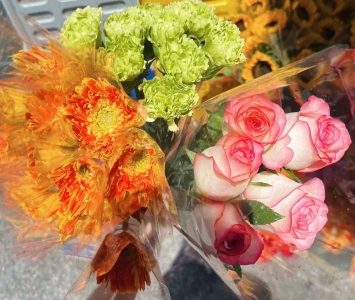
Recommended Food Near Guangxiao Temple
There are plenty of places to eat near Guangxiao Temple. If you’re unsure where to start, here are two highly recommended options.
Rongsheng (Guangxiao Road Branch)
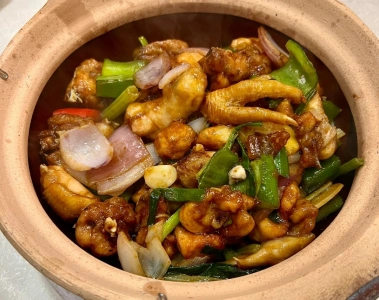
- Why we recommend it: A beloved spot among local Guangzhou residents, known for its sizzling clay pot dishes. It’s always busy—expect a line—but the aroma and flavor are unbeatable. The crackling sounds from the hot pot add to the lively atmosphere, making it a must-try every time I visit Guangxiao Temple.
- Address: 62 Guangxiao Road, Yuexiu District, Guangzhou (Apple Maps/Amap)
- Hours: Daily, 11:00–14:00 and 17:00–22:00
- Average cost: 58 CNY per person
Deji Shunde Cuisine (Guangxiao Road Branch)
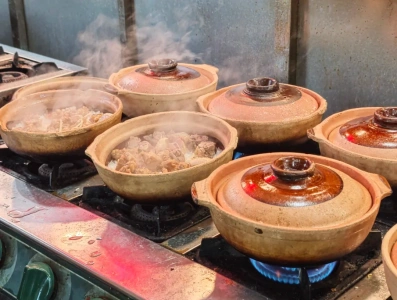
- Why we recommend it: Fresh ingredients, generous portions, and rich flavors. The rice crust at the bottom of the clay pot is a highlight, especially when drizzled with soy sauce. The sizzling iron-plate dishes are also worth a try—a delightful combo of carbs and aroma.
- Address: 51 Guangxiao Road, Yuexiu District, Guangzhou (Apple Maps/Amap)
- Hours: Daily, 10:00–22:00
- Average cost: 30 CNY per person
Recommended Hotels Near Guangxiao Temple
Guangxiao Temple is located in Guangzhou’s Yuexiu District, a great area for tourists to stay. I recommend finding accommodation near Gongyuanqian Metro Station, which connects to both Line 1 and Line 2. This makes it incredibly easy to get around Guangzhou and visit major attractions. You’ll also find plenty of great restaurants nearby.
It’s just a short distance from Chen Clan Ancestral Hall, Beijing Road Pedestrian Street, the Sacred Heart Cathedral, and the Pearl River Night Cruise. Access to Canton Tower, Guangzhou Opera House, Guangdong Museum, and Baiyun Mountain is also convenient. Lastly, it’s easy to reach Guangzhou Baiyun Airport from here.
CityNote Sino Hotel (Guangzhou Beijing Road Memorial Hall Metro Station)
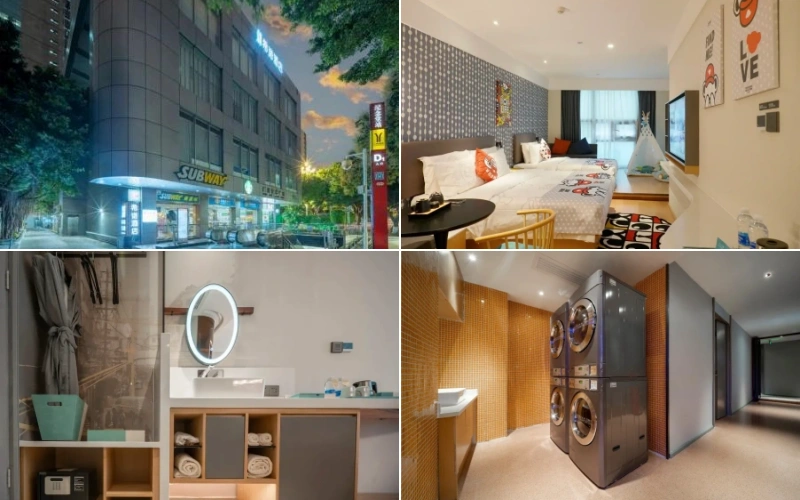
- Location: 5-minute walk to Memorial Hall Metro Station, 10-minute walk to Yuanquian Metro Station.
- Price Range: 349 RMB
- Check Room Rates: Trip.com Specials
- Rating: 4.6 on Trip
- Special Amenities: Gym, laundry room, triple rooms
Excellently situated near the A exit of Memorial Hall Metro Station. Starbucks and 7-11 are right downstairs, providing great convenience for accessing Beijing Road, Chen Clan Academy, and other attractions either by walking or a short taxi ride. Additionally, it’s a direct ride from Guangzhou South Station on Metro Line 2 without any transfers.
The rooms are satisfactory and comfortable. Although small, they are fully equipped with all necessary amenities. Delicious late-night porridge is also available.
Ying Shang Hotel (Guangzhou Beijing Road Pedestrian Street)
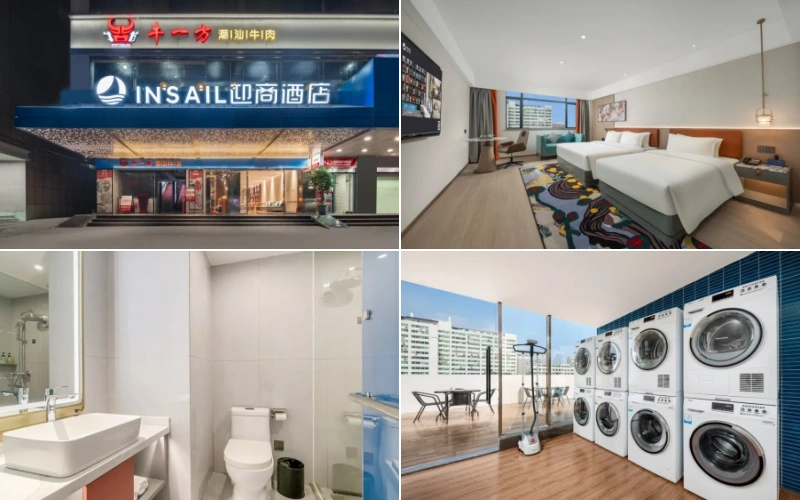
- Location: 9 minutes walk from Yuanquian Metro Station
- Price Range: 350 RMB
- Check Room Rates: Trip.com Specials, Compare on Klook
- Rating: 4.7 on Trip
- Special Amenities: Gym, laundry room, robot room service
The hotel is well positioned near Gongyuanqian Metro Station, nestled in a quiet area despite its proximity to the lively surroundings. Directly opposite the Yuexiu District People’s Government. Attractions like Beijing Road, People’s Park, and the Sun Yat-sen Memorial Hall are nearby, with the South Vietnam King Museum just a 10-minute walk away. The metro is also within short walking distance, with numerous dining options available just downstairs.
The hotel maintains a clean and orderly environment. The rooms are not only clean and odor-free but also offer a tranquil atmosphere that allows guests to quickly escape the hustle and bustle. Additionally, the breakfast is quite extensive and the service is exceptionally attentive.
Guangdong Guest House
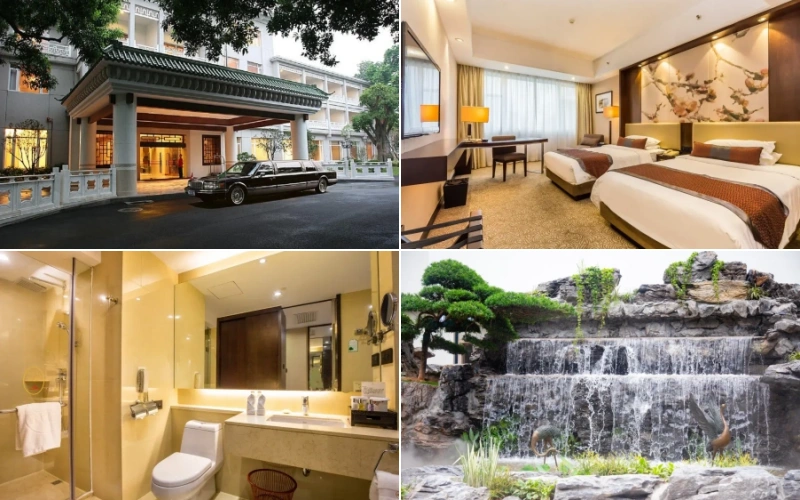
- Location: 8 minutes walk from Yuanquian Metro Station, 12 minutes walk from Memorial Hall Metro Station
- Price Range: 591 RMB
- Check Room Rates: Trip.com Specials, Compare on Klook
- Rating: 4.8 on Trip
- Special Amenities: Gym, paid indoor swimming pool, triple rooms, family rooms
The Guangdong Guest House, situated on the site of a former royal residence, boasts a rich historical heritage. It is conveniently located for taxis and also near a metro station for those concerned about traffic. The hotel is also a short walk, approximately fifteen minutes, from Beijing Road Pedestrian Street.
Although the hotel’s exterior shows its age, the rooms are newly refurbished, spacious, and very clean. The beds and pillows are particularly comfortable. The hotel’s restaurant offers excellent dishes, especially the traditional Guangzhou morning tea.
How to Get to Guangxiao Temple from Downtown Guangzhou
The easiest way is by metro. Guangxiao Temple is within a 10-minute walk from Line 1. Most visitors also walk here after exploring nearby attractions like the Temple of the Six Banyan Trees.
By Metro
Take Line 1 to Ximenkou Station, Exit C. Walk 500 meters. You’ll see a McDonald’s outside the station, then flower stalls ahead. Keep going, and the temple will come into view.
By Taxi or Ride-Hailing App
A taxi ride from downtown Guangzhou to Guangxiao Temple usually takes under 15 minutes and costs between 15 to 20 CNY.
FAQ
Strollers are manageable, but wheelchairs may not be ideal. Although the steps are shallow, there are quite a few of them and they appear frequently.
Guangxiao Temple itself doesn’t offer luggage storage. However, shops between the metro station and the temple entrance often provide storage services.
Essential Guangzhou Travel Resources
- Comprehensive Guangzhou Travel Guide 📖
- Guangzhou Travel Recommendations 🏙️
- Hotel Recommendations 🏨
- Transportation Guides ✈️ 🚇 🚄 🚆
- Essential Travel Tips & Tools 🗺️ 🍜 📱 💸 🌤️ 💊

 English (Hong Kong)
English (Hong Kong)
 English (US)
English (US)  English (Malaysia)
English (Malaysia)  English (Singapore)
English (Singapore)  繁體中文
繁體中文 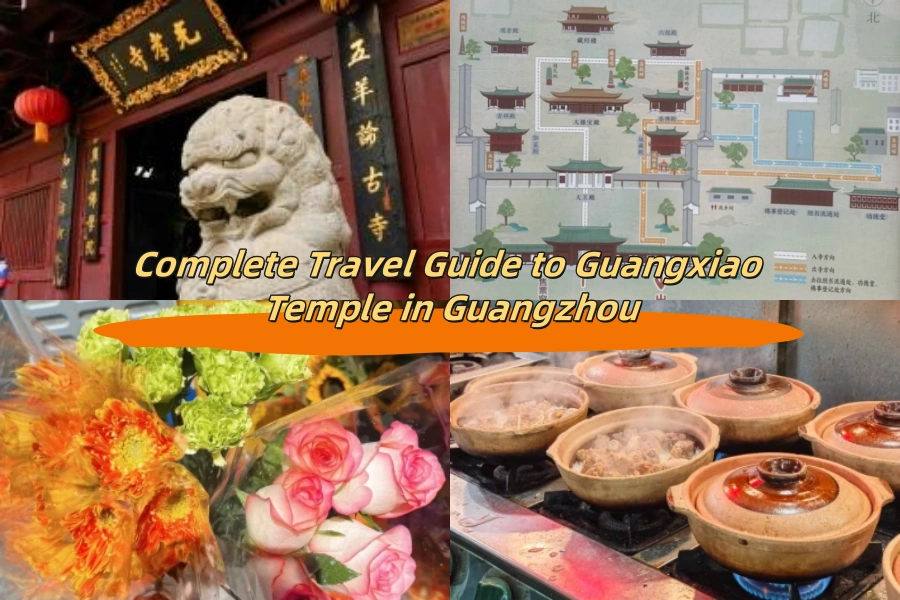
Comment (0)